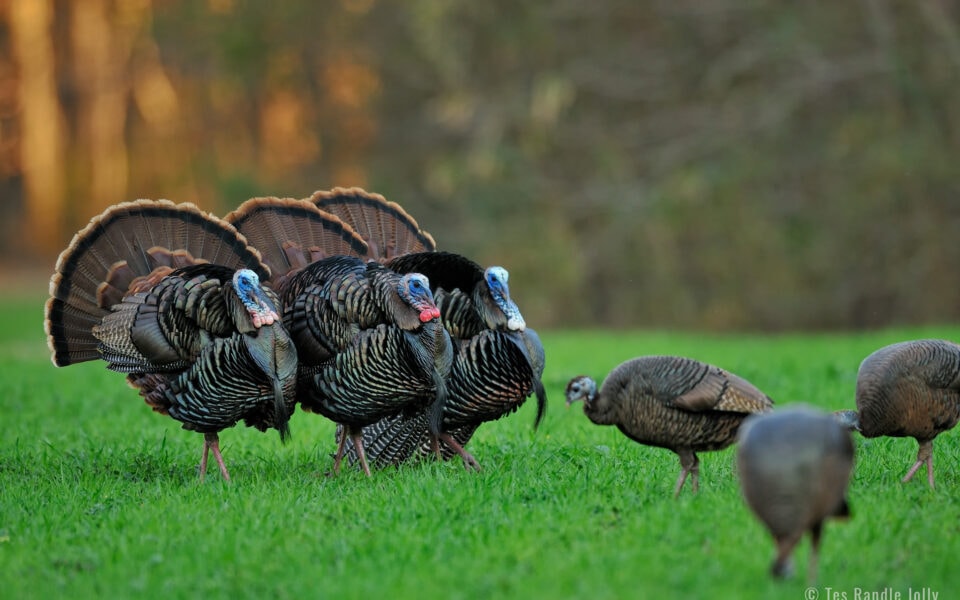Why Turkeys Strut
Why Turkeys Strut – Breaking Down Wild Turkey Displays: Ask any turkey hunting addict what drives their obsession and the answer likely includes the intoxicating rush of calling in a brush-bearded, sunlit strutting tom, gobbling, spitting, and drumming through the spring woods. It’s a part of the turkey hunting experience that can drive normally sane hunters to the woods for weeks, sacrificing sleep, work, and family time.
Have you ever wondered about the “mechanics” of how a strut occurs? What’s the process that transforms a slightly buzzard-looking turkey into a heart-stopping feathered kaleidoscope of color capable of haunting a hunter’s dreams? And there’s the subtle spitting and drumming sounds, “chhhkkkk”, then “whoouump”⎯that are felt more than heard, when a turkey is very close. How do they do that? Let’s take a closer look at strutting, spitting, and drumming through photos, the author’s observations and wild turkey experts.
The turkey strut defined
The turkey strut is a marvelous physical transformation that’s inspired NWTF’s “On the Hunt” editor for Turkey Country magazine, Brian Lovett, over decades of hunting across the country.
“Honestly, I don’t think turkey hunting would be quite as much fun if gobblers didn’t strut. It’s just such a great visual spectacle. Even nowadays, my heart rate increases every time I see a fan or a strutter — even if they’re 200 yards away. It’s just one of those behaviors that makes turkeys so fascinating,” says Lovett.
A spring gobbler in full strut is obvious and most gamekeepers and hunters don’t need an explanation. However, there are some interesting details. The strut is best described as a set of physical actions and elements that transform the bird from bland to grand. It’s Nature’s instant makeover for bachelor gobblers to attract mates, intimidate rivals, and the inspiration for the expression, “strut your stuff!”.
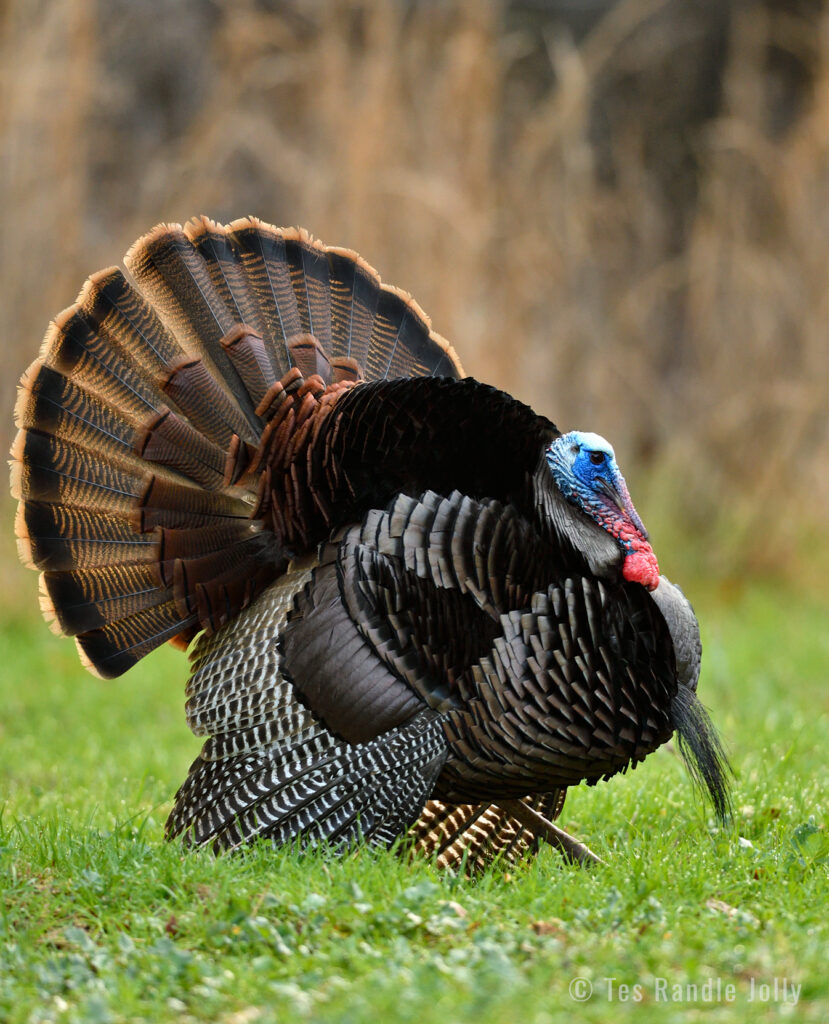
During full strut the wings are lowered to allow the primary wing feathers to touch the ground. This produces drag marks that map the movements of the gobbler as the bird displays, leaving clues hunters can use to identify strut zones. The author’s husband, Ron Jolly, has hunted turkeys for more than 50 years and hears turkeys better than most. Jolly notes that wings dragging makes a sound hunters should learn to identify when hunting in dry areas or rocky terrain. It’s a close-range sound that can be louder than drumming in certain situations.
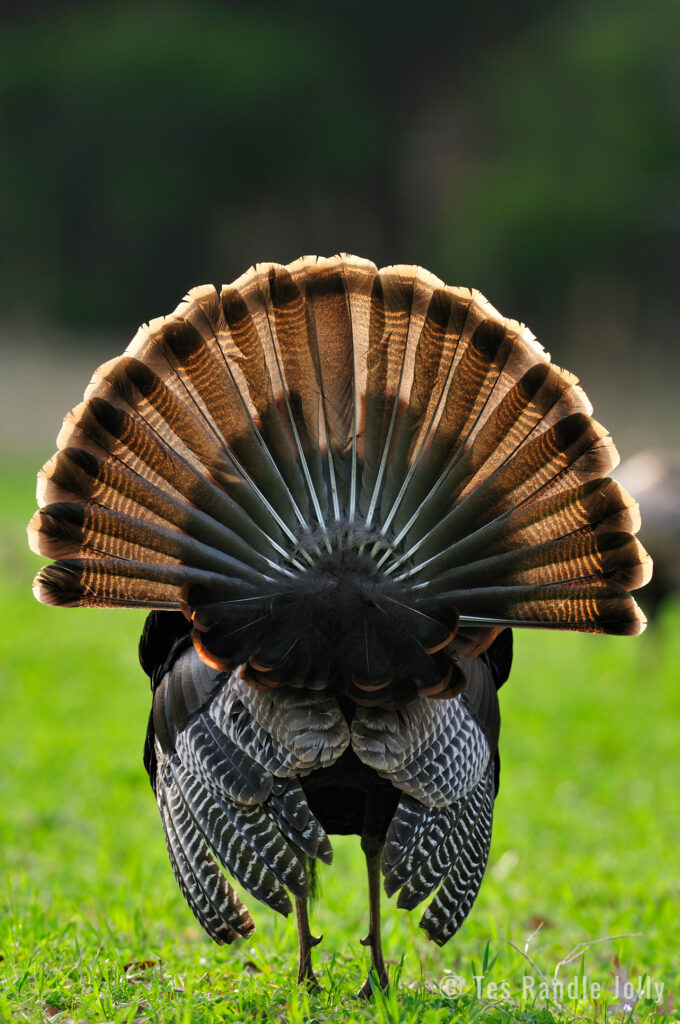
In a full strut, the tail raises to a vertical position and feathers open to form a fan. Tails average 18 feathers but can have more or less. The gobbler may swivel the fan in various directions to show it off more effectively.
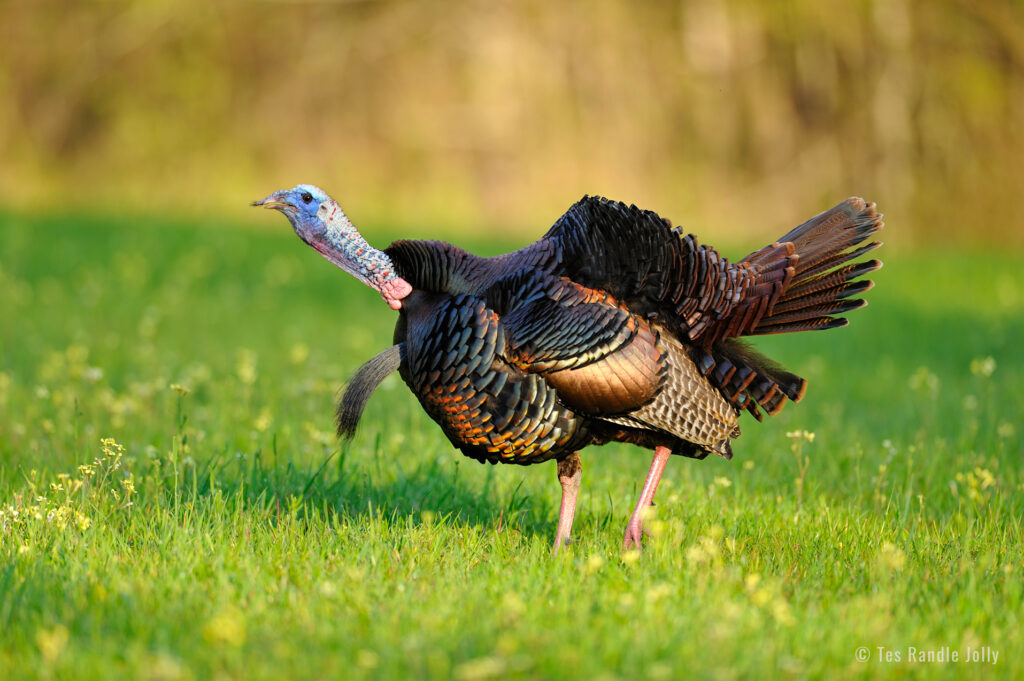
The open fan may also be held in lower positions such as when gobbling or breaking strut to scan the area for hens, rivals, or danger.

The body feathers on the back and breast raise simultaneously making the gobbler appear larger. How do they do that? Think of it as controlled goosebumps, only turkeybumps. Small muscles located at the base of each feather enable the bird to move its feathers. Those muscles are connected to other very small muscles within the skin. When strutting, the turkey contracts the muscles that control feather position, causing the body feathers to stand erect. The same applies to a group of muscles located at the base of the tail and muscles in the wings.
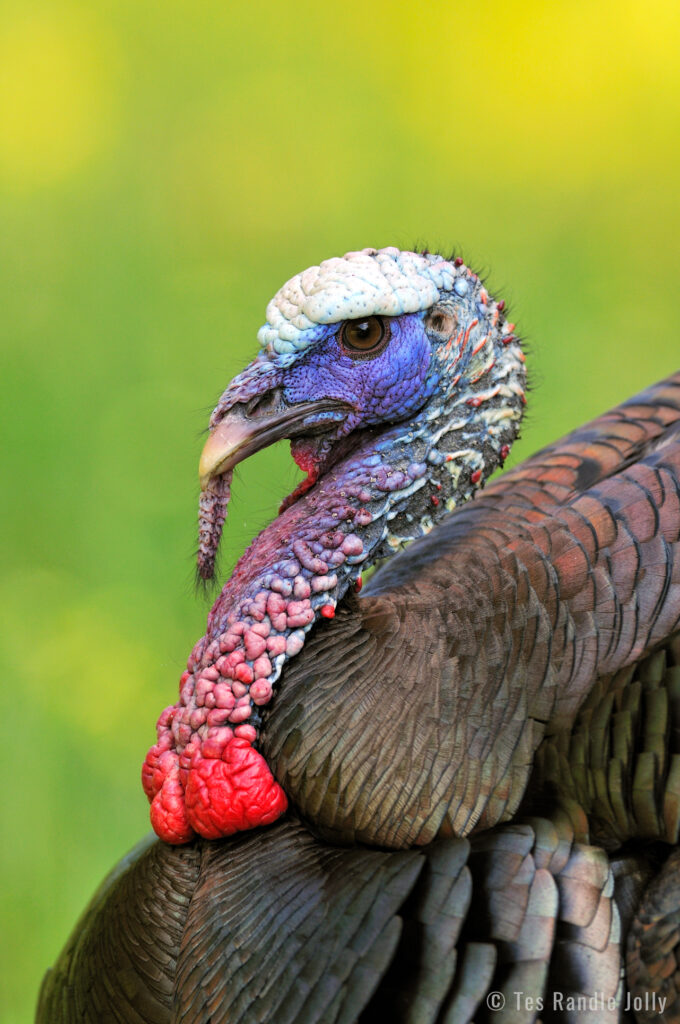
The head, neck, snood, and caruncles are naked skin. The head’s crown, or skull cap, is typically pure white when the turkey is strutting. It’s often the first thing a hunter notices as a strutter approaches. The face, neck and caruncles may range from blue to bright red to flesh tone or white, changing colors in response to the bird’s mood. How do they do that? Wild turkey gobblers have the capacity to contract and relax small blood vessels in the head and neck skin causing color changes.
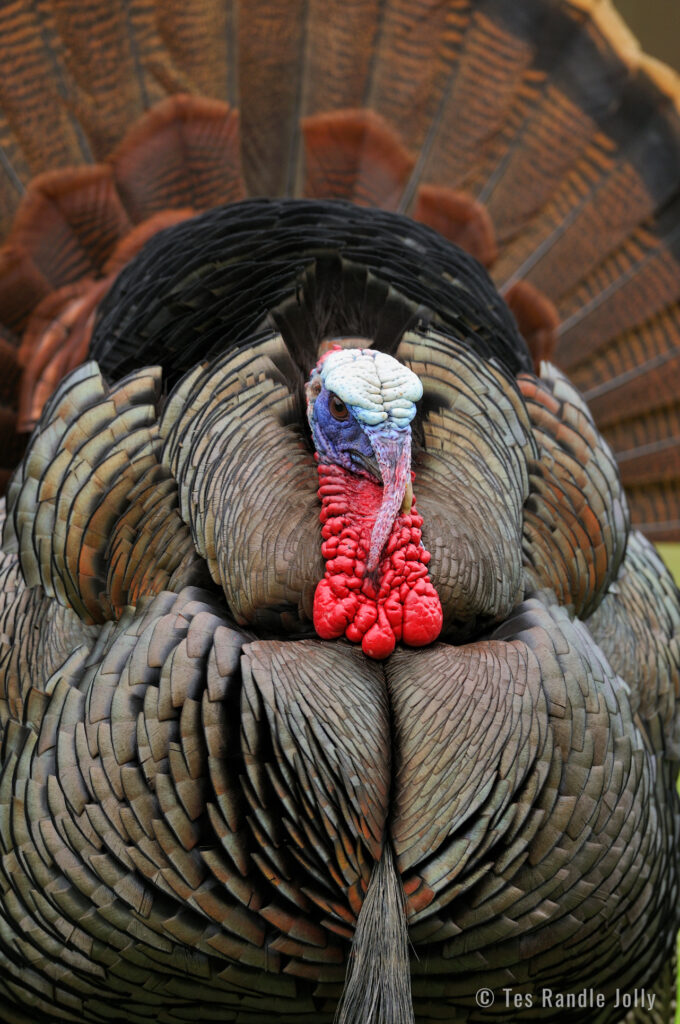
A gobbler in full strut will lower its head and neck so the head is tucked into the erect back feathers. The fleshy worm-like snood elongates when the bird is aroused, drooping several inches from the beak’s base. The lengthening and contraction of the snood is also controlled by muscles and blood vessels. A gobbler in full strut will lower its head and neck so the head is tucked into the erect back feathers. The fleshy worm-like snood elongates when the bird is aroused, drooping several inches from the beak’s base. The lengthening and contraction of the snood is also controlled by muscles and blood vessels.
Why and when do turkeys strut?
Lovett says, “Why and when do gobblers strut? Honestly, I think whenever they feel the urge. Here in Wisconsin, I’ve seen strutters every month of the year. Obviously, I think, they really begin to strut in earnest as the amount of daylight begins to increase in late winter and early spring. Their testosterone levels also increase, which leads to more macho strutting behavior, whether in reaction to potential rivals or an attempt to woo hens. I think this peaks during the pre-breeding and breeding phases, but gobblers will also strut in late spring or summer, especially for hens that have apparently lost their nests or broods.
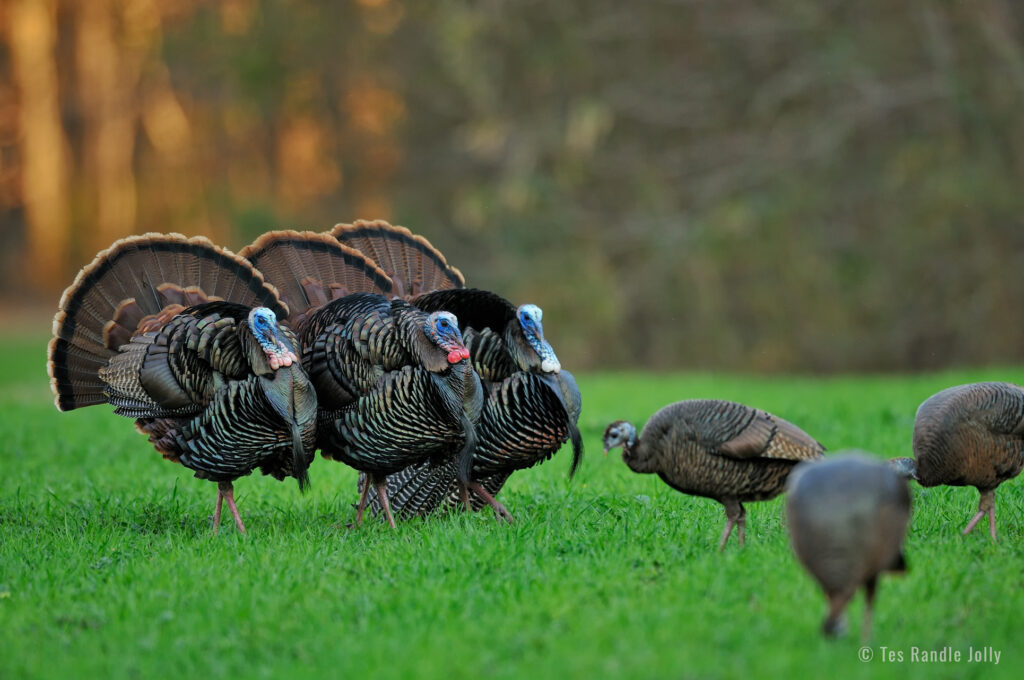
In general, strutting is associated with spring breeding season when gobblers defend their status and show off their plumage and colors to attract hens.
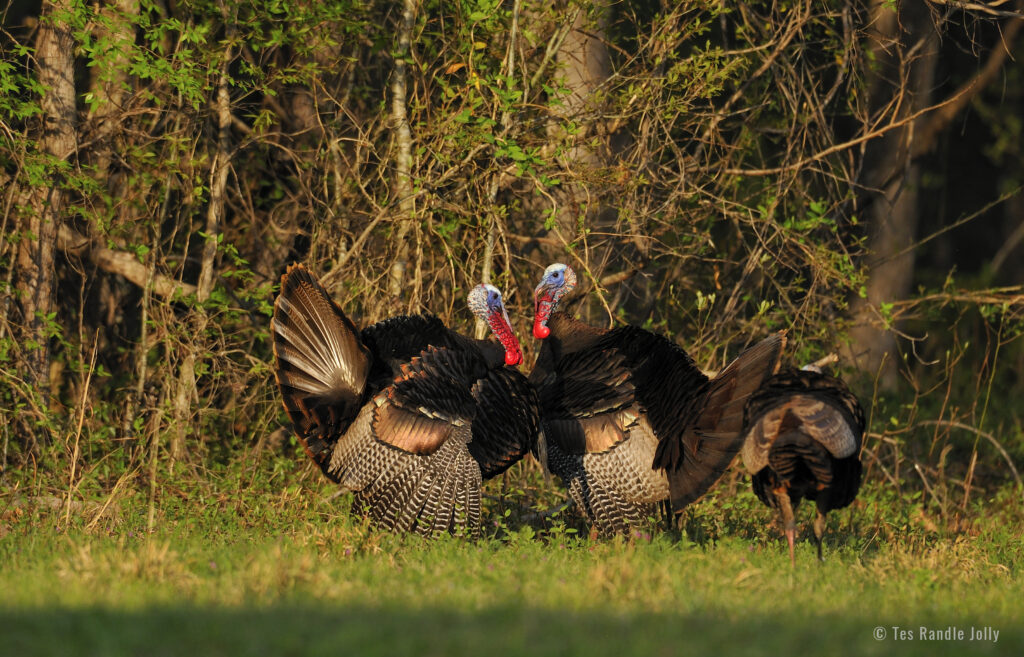
The display has additional implications in other circumstances such as a show of dominance among males outside of breeding season and when winter flocks reconnect and establish the pecking order.
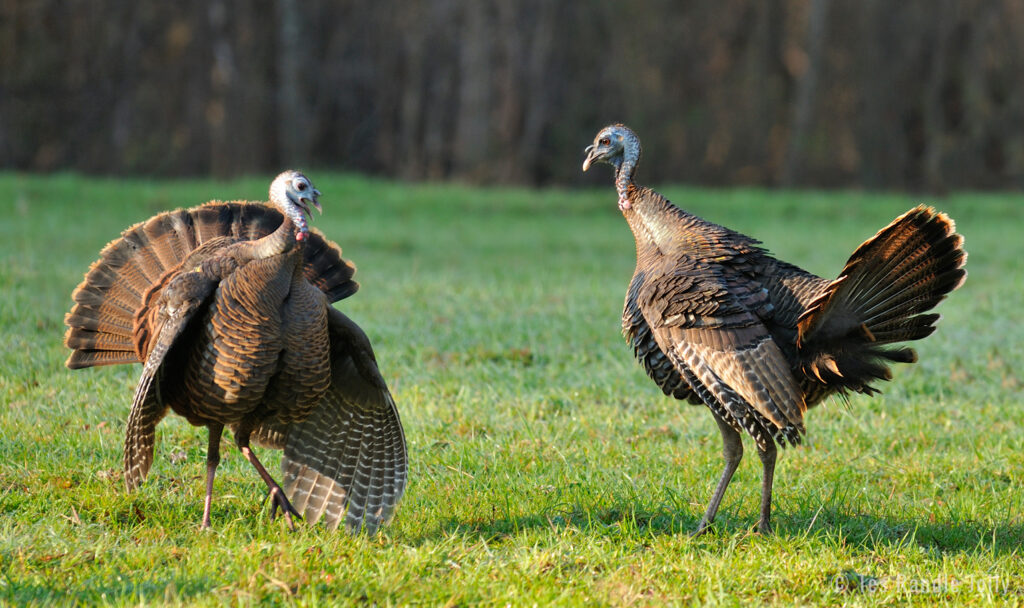
Hens may strut to convey dominance or occasionally in response to threats from predators to the brood.
Where do turkeys strut?
If there’s a rule about where gobblers strut, it’s there are no hard and fast rules where gobblers strut.
Lovett says, “I’ve seen gobblers strut in almost every type of terrain and habitat. Certainly, they love to fan out and display in fields, pastures, food plots, logging roads, timbered flats, and other relatively open areas. That seems to make biological sense, as strutters in these areas can see other turkeys and potential predators, and other turkeys can easily see them. Also, they really seem to favor strutting on south and east-facing slopes or benches in the morning, where they can soak up warmth and rays from the rising sun. I’ve also seen them strut in fairly tight timber or even brushy areas that might impede their wings and feathers — places where conventional wisdom tells us they would never strut. Usually, they’re with hens when they strut in these areas, but not always.”
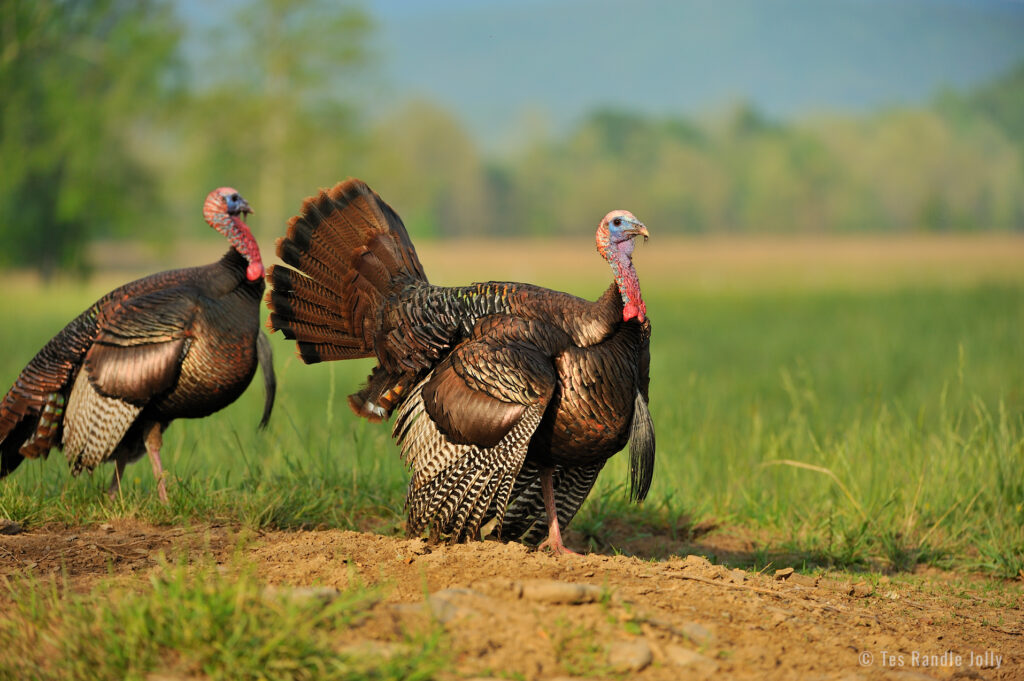
Turkeys strut anywhere the notion strikes, although two attributes are common to many sites; good sunlight in enough open area for gobblers to be seen, spot danger and to observe hens approaching, and good acoustics so the gobbles can be heard from a long distance. Locations that consistently show evidence of tracks, scratching and wing drag marks in dirt, sand, or snow indicate a “strut zone”, a place where turkeys meet and gobblers strut.
“I think a gobbler will return regularly to a site where he’s met hens previously, but I don’t believe they establish tight strutting zones in the technical sense. Basically, I think a gobbler remembers those areas in his home range where he regularly encounters hens and goes to them when the fancy strikes. That might be once a week or several times per day. Turkeys are just so random in their movements, and few of them get locked into hard-and-fast routines. It’s sort of like a hen that goes to a green food plot three straight days after fly-down but then goes the opposite way on Day 4. Why? Who knows? They’re turkeys. To me, gobblers are much the same with so-called strutting zones. However, if you’ve seen a strutter frequent an area more than once, that is a great potential setup spot. He’s obviously comfortable in the area and has no hang-ups about visiting it,” says Lovett.
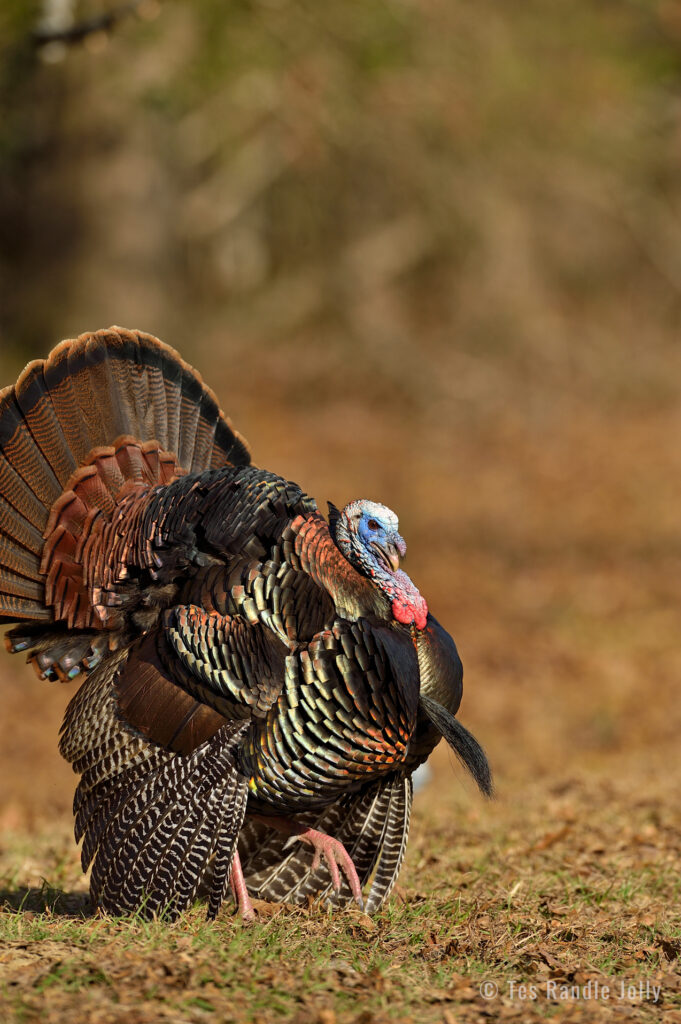
When strutting, especially in the presence of hens, toms exhibit the spit & drum behavior, which adds subtle sounds and drama to the bird’s courtship display. It usually starts with a couple of quick steps or a leg lift as the bird’s beak opens slightly, emitting a brief but forceful “pfft” or “tick” sound. The body feathers audibly shudder (remember the tiny muscles attached to feathers and skin), as the bird emits a low-pitched “duum”, or drum that begins low and increases in tone and volume at the end.
Turkeys almost always spit and drum when they strut but also do it when not strutting. Unlike a gobble that can carry up to a mile, the ruffling feathers and spit and drum sounds can be difficult for humans to hear beyond a hundred yards, even in the best conditions. Many hunters fail to hear or recognize these three sounds even when a bird is close. A quick tour of YouTube videos on the subject is helpful.
Lovett has his own theories and the author agrees. “I’ve always thought spitting and drumming were just guttural sounds produced within the body via air movement. Years ago in Nebraska, an outfitter had a “pet” turkey that would walk right up to you. It strutted almost constantly, and you could put your hand on it and feel it spitting and drumming. The spit portion was very forceful — almost like someone stifling a powerful sneeze. And the bird’s entire body vibrated during the drum portion. Pret- ty neat. I’ve always assumed a spit-drum was produced by one breath. I don’t have any evidence to back this up, but I wonder if pauses between spit-drums occur when the bird inhales. Another interesting note: It’s amazing to me how I don’t hear some turkeys drum until they’re almost on top of me. This is especially true when it’s windy, raining, or otherwise noisy in the woods. Other days, I can clearly hear one drumming 100-plus yards away. I wonder if it’s the actual volume of the spit-drum or an environmental factor. Or maybe it’s just my gunshot-damaged ears!” says Lovett.
If you hear a gobbler spit and drum, he’s close. Experienced hunters like Jolly focus on drumming as a bird approaches, especially if it has stopped gobbling.
“If I can hear drumming when a bird goes silent, it allows me to track the turkey’s whereabouts and lets me know to be still, have my gun up, cheek down and be ready for the shot. If the gobbler doesn’t appear immediately, drumming tells me to be patient and assures me he’s still in the area. The game is still on!” says Jolly.
Final Thoughts on Turkeys Strutting
Listen carefully for spitting and drumming when birds are on the morning roost. The sound carries further in an open canopy and on high ground. If you’re hunting in a high-pressure area, a turkey may not gobble but will drum to call up his hens. In regions with high predator populations, like bobcats and coyotes, turkeys often only drum because the sound doesn’t carry as far. When turkeys aren’t gobbling, listen for hens and/or jakes making intermittent short series of excited yelps. They may be responding to a silent gobbler’s spit and drum. Hunters who strive to perfect the art of listening, being still and quiet increase their chances of tagging a tom as they learn to hear and pinpoint the subtle sounds of a gobbler’s spit and drum.
Wild turkey strutting is well defined but scientific research on spitting and drumming is still incomplete. Regardless, the irresistible allure of a sunlit spring gobbler strutting, spitting and drumming is one of Nature’s most elaborate and mesmerizing courtship displays. Enjoy it for what it is, a gift from our Creator that all turkey hunters can appreciate.

